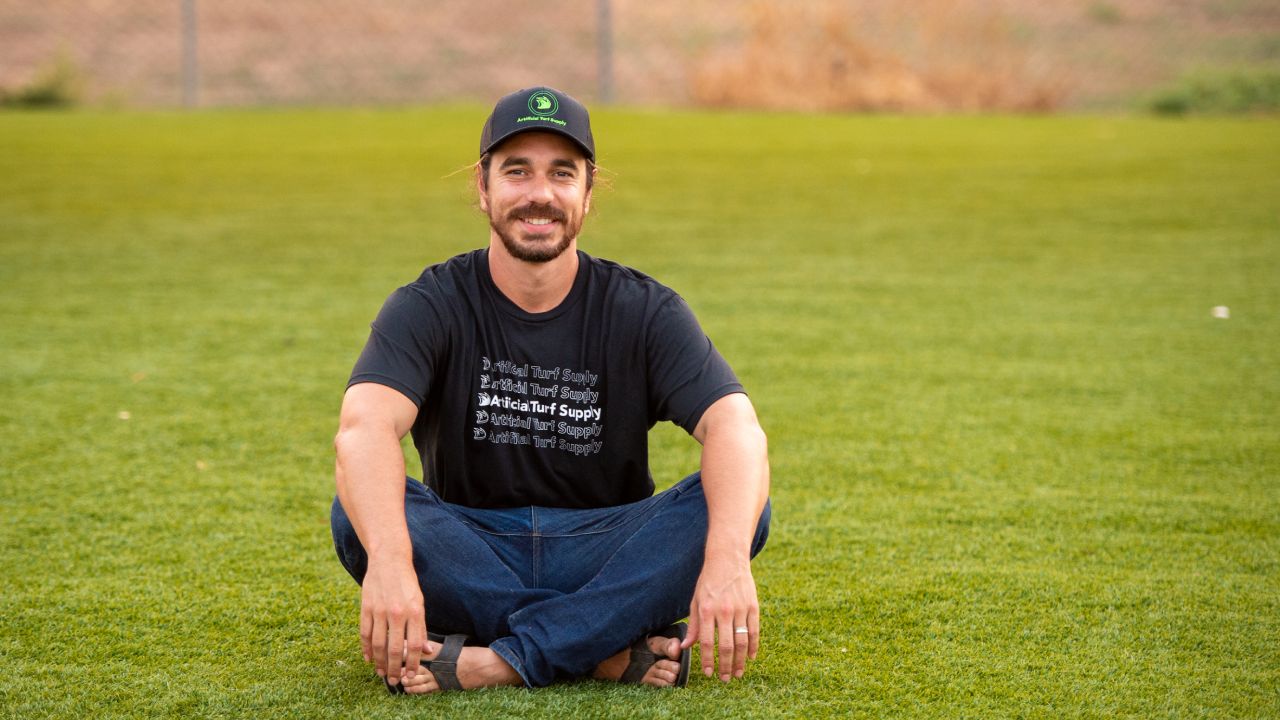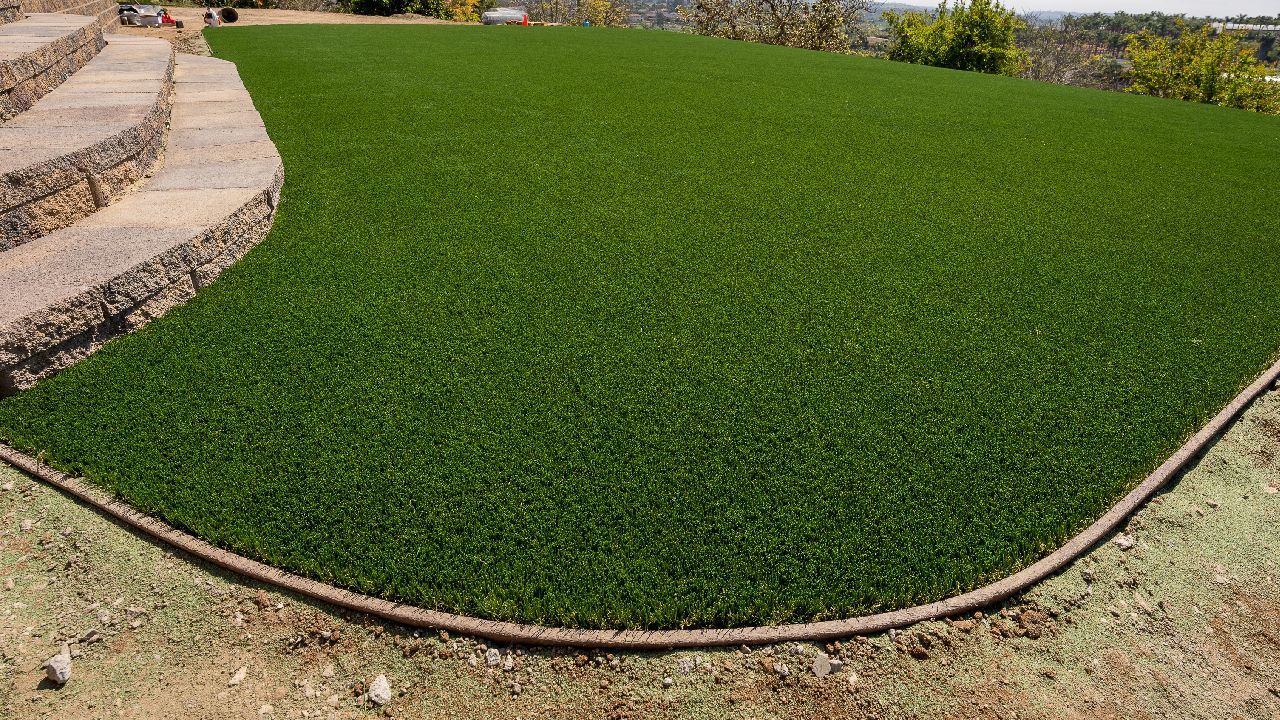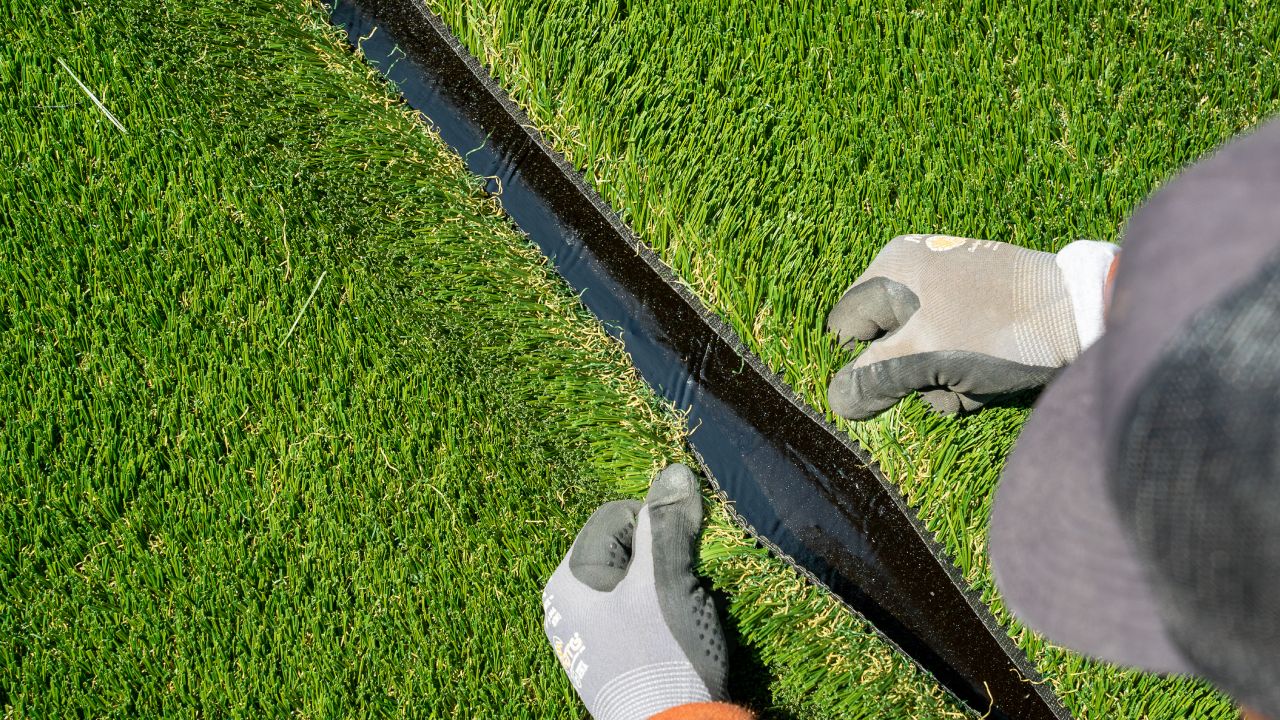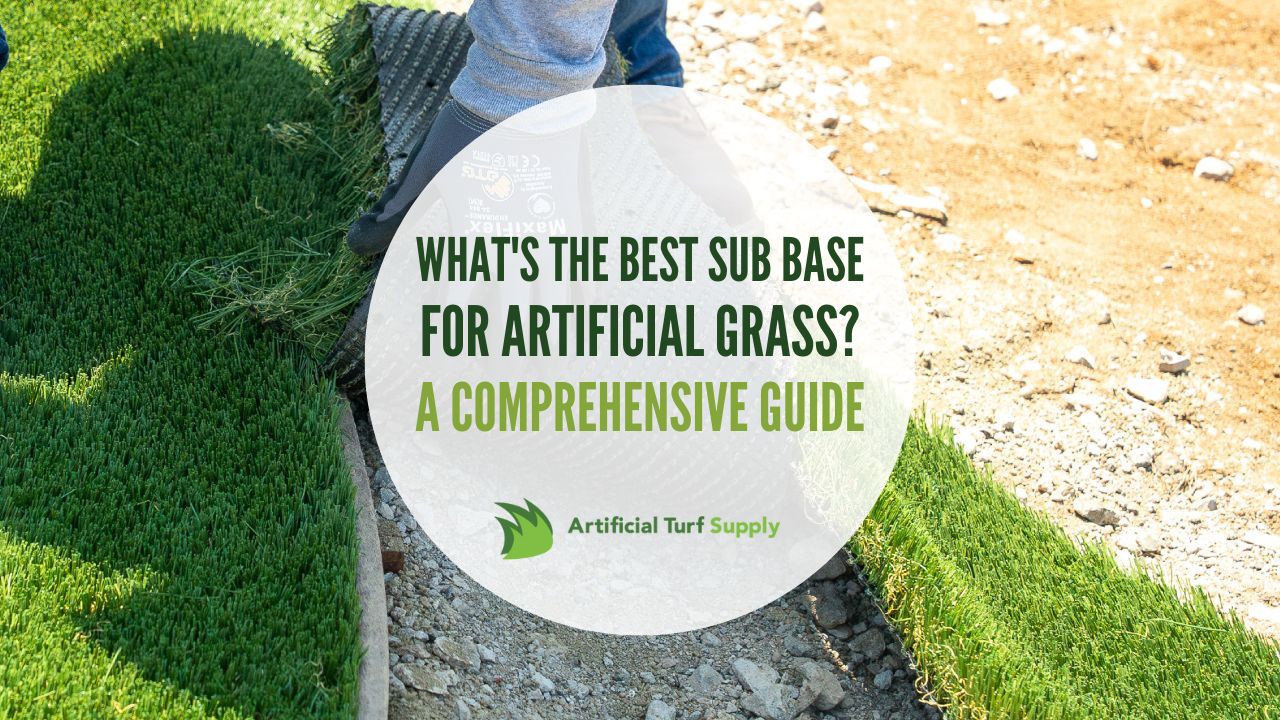
Using the best sub-base for artificial grass projects is a one-time investment that pays you back year after year. The right sub-base makes your turf last longer. It enhances your grass’s visual beauty and its foot-feel. So, athletic surfaces are more stable. Public park synthetic turf is softer for kids and pets. Yards keep a level, manicured look far longer.
Identifying your ideal sub-base material is crucial for the turf’s longevity and performance. Artificial grass is an investment. You want to see some returns in the long run, right? So, for an accurate answer to this question, you must understand why sub-base is important. You need to know what types are available. And you need to understand the strengths and shortcomings of each. I’ve covered all of this, as well as a few important tips about installation and maintenance. Sub base school is now in session, grasshopper.
Think of it like going to that higher-end, organic grocery store. Sure, those high-quality vitamins and foods can be painful when you pull out your wallet. But in the long run, you live longer because you’re healthier. You look better. You feel better.
So, let’s feed some high-quality sub-base info into your brain. Then, you can make the best decision for your turf project.
The Best Sub-Base Tips
-
- A quality sub-base provides essential stability and drainage for your artificial grass
- Skimping on the sub-base can lead to an uneven surface, standing water, and damage to your turf
- The right sub-base material depends on factors like soil type, climate, and intended use
- Professional-quality installation with a proper sub-base pays off in the long run
What Is A Sub-Base and Why Is It So Important?
The sub-base is the material layer between the ground and your artificial grass. It’s usually a mixture of gravel, sand, or crushed stone. The exact make-up you use determines how it helps your turf. And the sub-base’s main job? To provide a stable, even surface for the turf to lay on. It also allows water to drain through. If water pools on top of your artificial grass, it will get ruined … fast.
Choosing the wrong sub-base can result in:
-
- Uneven surface: An uneven sub-base causes your artificial grass to develop lumps, bumps, and dips over time. Then, you’re left with a shoddy-looking surface that’s uncomfortable to walk or play on.
- Poor drainage: A sub-base that doesn’t allow water to pass through can lead to standing water on your turf, which looks and feels gross and can damage the grass fibers and attract mold and mildew.
- Weed growth: Believe it or not, weeds can still sprout up through artificial grass if the sub-base isn’t deep enough or has no weed barrier. Talk about defeating the purpose of going low-maintenance.
- Shifting and sinking: A sub-par sub-base can shift, settle, or wash away over time. Then, your once perfectly flat turf develops dips and valleys. Not a good look, my friends.
Best Types of Artificial Grass Sub-Base
The right sub-base material choice ensures proper drainage, stability, and longevity for your turf. Here are the three most common types of sub-base materials. I added some context to help you understand the differences.
-
- Crushed Miscellaneous Base (CMB):
CMB is a mixture of recycled concrete, asphalt, sand, and gravel. The particles range in size from 3/4 inch down to fine sand. It’s a cost-effective option that compacts well and provides good drainage. CMB is the most popular choice for residential artificial grass installations because of its price and durability. - Class II Road Base:
Class II road base is similar to CMB but undergoes more rigorous testing to meet higher quality standards. It’s a mixture of sand, gravel, and crushed stone. It provides excellent stability and drainage. But it’s more expensive than CMB. You’ll often see Class II road base in commercial projects or high-traffic areas because it creates a sturdier foundation. - Decomposed Granite (DG):
DG is a type of gravel that forms from the natural weathering and erosion of solid granite. It breaks down into a mixture of sand, gravel, and clay particles. DG compacts well, creating a smoother, more permeable surface compared to CMB. But it is also more expensive. This smoother, finer finish makes DG great for putting greens or similar specialty applications.
- Crushed Miscellaneous Base (CMB):
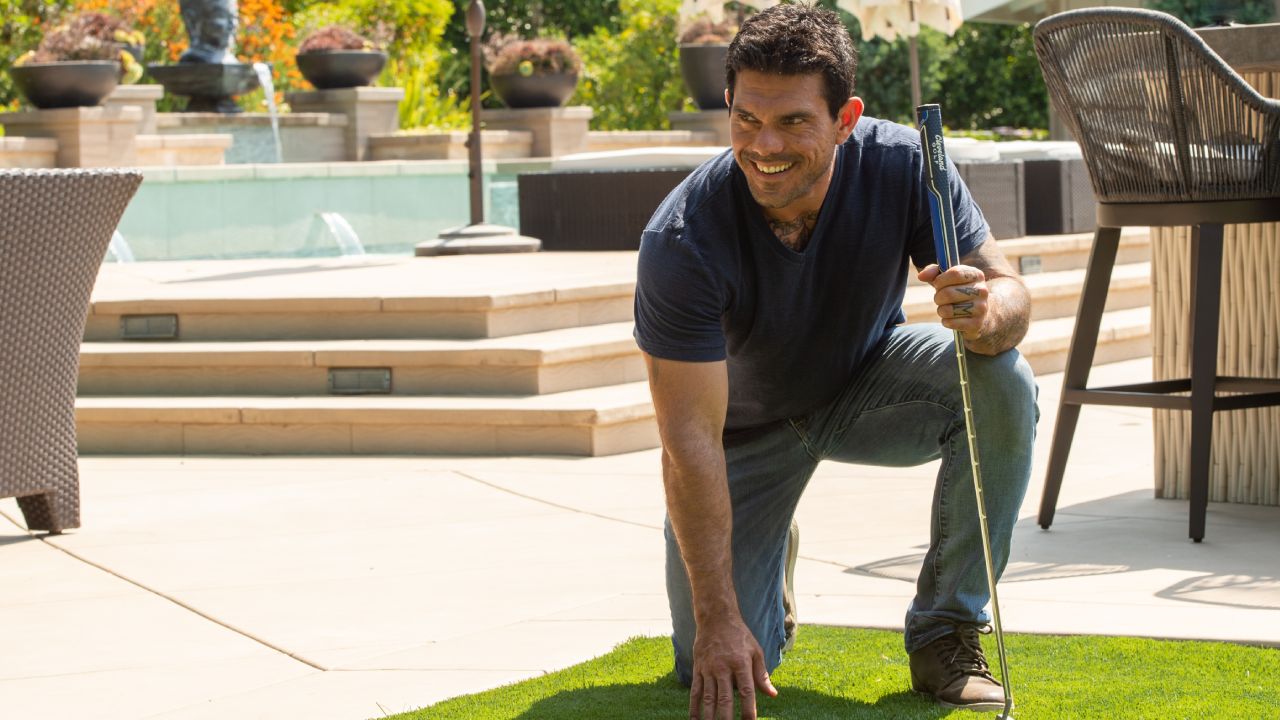
Ultimately, the best sub-base material for your artificial grass project depends on factors like your budget, intended use, soil type, and desired surface finish. Professional artificial grass installers can give you some great insights into determining your optimal sub-base solution based on your specific needs and site conditions.
Check out this article if you’re not sure if your project can use artificial grass.
Choosing the Best Sub-Base for Your Turf Project
So, how do you choose the best sub-base material for your artificial grass installation? You’ll want to consider a few important things to answer that.
-
- Soil type: If you have clay-heavy soil that doesn’t drain well, you’ll need a sub-base with excellent drainage properties like crushed stone or gravel. Sandy soil may require a sub-base with more stability, like class II road base.
- Climate: In areas with heavy rainfall or freeze-thaw cycles, a sub-base with good drainage and flexibility is a must to prevent shifting and heaving. Crushed stone or “breeze” works well in these conditions.
- Usage: For high-traffic areas or sports fields, a sturdier sub-base made of compacted gravel or crushed concrete is ideal to withstand the extra wear and tear. For putting greens or low-traffic lawns, a sub-base of decomposed granite or sand may suffice.
Concrete Base: the Sturdy, Dependable Turf Base
Pros:
-
- Strong and durable
- Can handle heavy traffic
Cons:
-
- Hard surface
- Can get very hot in direct sunlight
Crushed Rock Base: Comfort Meets Stability
Pros:
-
- Great for drainage
- Provides stability
- More forgiving surface than concrete
Cons:
-
- Can be difficult to clean
- May track into your house
Decomposed Granite Base: Give Your Turf a Smooth Look
Pros:
-
- Compacts well for a smooth surface
- Excellent drainage
- Attractive appearance
Cons:
-
- More expensive than other options
- Can settle unevenly over time
Sand Base: Be Wary of this Easy, Inexpensive Artificial Grass Foundation
Pros:
-
- Inexpensive
- Easy to install
Cons:
-
- Can shift over time, reducing stability
- May harbor bacteria, especially with pets
Permeable Pavers Base: Solid Performance While Protecting the Planet
Pros:
-
- Allows water to drain through
- Provides a solid surface
Cons:
-
- Complex installation process
- Higher cost compared to other bases
Preparing and Installing Sub Base
You’ve picked out your sub base material. Now it’s time to get your hands dirty (figuratively speaking, of course – we recommend wearing gloves). Here’s a quick rundown of the installation process:
-
- Excavate the area to a depth of 3-4 inches
- Compact the soil to create a stable foundation
- Install a weed barrier (optional but recommended)
- Spread your chosen sub base material evenly
- Compact the sub base using a plate compactor or hand tamper
- Test for stability and proper drainage
Now, I know what you’re thinking: “Mark, this sounds like a lot of work!” And you’re right, it is. It’s worth it in the long run. This is one of those “You get out of it what you put in” situations. In a big way. A properly installed sub base will save you a world of headaches down the line.
But maybe you’re not the type who wants to spend hours tamping down dirt. Great! Your good friends over here at Artificial Turf Supply have decades of experience. Check out our How To Center to watch & learn how to rough grade your artificial turf base and how to fine grade your artificial turf base.
Sub Base Maintenance and Troubleshooting
You can’t 100% future-proof your artificial grass. It’s just the truth. Your artificial grass will need a little caring effort from time to time. Taking care of your sub base is an important part of that.
Here are my tips for keeping that sub base in tip-top shape:
-
- Regularly check for signs of settling or drainage issues
- Fill in any low spots with additional sub base material
- If you notice persistent drainage problems, consider installing additional drainage channels
And don’t freak out if you do run into a few sub base issues. Most can be fixed with elbow grease and extra sub base material. Just don’t let those problems linger. If you see a problem, jump on it. You will definitely want to prevent any long-term damage to your turf.
Best Sub-Base Prep and Installation Suggestions
Of course, the depth of your sub-base matters too. A good rule of thumb is at least 3-4 inches of compacted sub-base material for most residential artificial grass installations. For commercial applications or areas with poor soil, you may need to excavate deeper and use up to 8 inches of sub-base.
Artificial Turf Supply has a more detailed blog about installing artificial grass. This gives you a better understanding of preparing your project area and installing your sub-base. Want my rule of thumb? When in doubt, talk to a professional. The Artificial Turf Supply is just a phone call away. They’ll expertly assess your specific site conditions and recommend the best sub-base solution.
Professional Advice and Sub-Base Recommendations
Now, I know what you might be thinking: “Professional installation? That sounds expensive! Can’t I just do it myself and save some cash?” My hat’s off to all accomplished DIY folks. But I’ve gotta be straight with you – installing artificial grass is not a project for the faint of heart or the inexperienced. You need specialized tools, materials, and know-how to get that sub-base just right. Cuttings corners or winging it can cost you way more in the long run. You DO NOT want to have to rip up and redo a failed installation.
Investing in a professional artificial grass installation with a proper sub-base is worth every penny. You’ll save you time and stress (both super-important in my opinion). You’ll also ensure that your artificial lawn looks and performs its best for years to come.
The experienced team at Artificial Turf Supply will ensure you get the best workmanship and materials. That translates directly to peace of mind and protection for your investment.
If you’re interested in exploring a budget for your artificial turf, feel free to get a quote.
Plus, a professionally installed artificial grass lawn with a top-notch sub-base can actually increase your property value and curb appeal. Who doesn’t love a lush, green lawn that looks immaculate year-round without all the maintenance hassles? That’s like saying you don’t like puppies or ice cream or something.
Artificial Grass Sub-Base Professional Advice and Recommendations
The best sub-base for artificial grass is … a complex topic. But now you know why it’s so important to get it right. And you’ve learned much more about different sub-base materials, uses, and tips. You’ve put the best information in, so you can make the choice that will protect your turf investment for years to come.
Give us a call at (866) 677-9405 if you still have questions. Or feel free to explore our blogs for more expert insights about modern turf topics.
Request a free quote for your project today!
